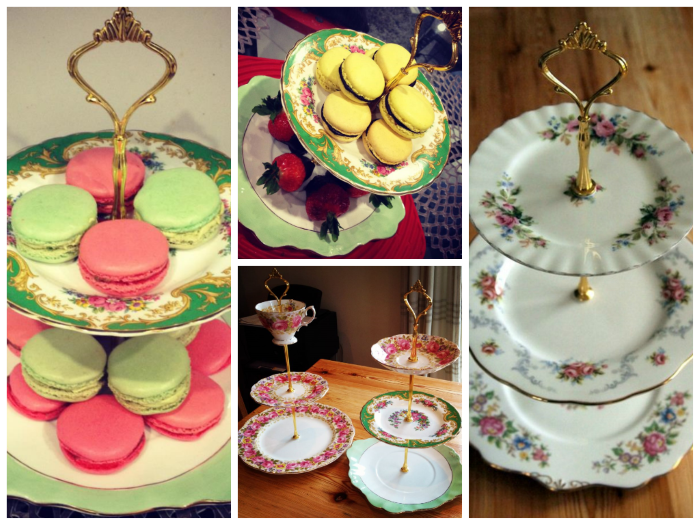DIY: VINTAGE CAKE STAND

Nothing shouts elegant tea party as much as a pretty vintage cake stand. I had seen some in shops before, but they were either too expensive, or I didn’t like all the plates in the set, so I decided to make one (or two, or three…) myself (with a little bit of help from the men in the family ;) ).
Making a tiered cake stand can be tricky but isn’t as hard as you might think. Actually, the hardest part is probably sourcing your plates! I got mine from various places - charity shops, vintage markets, eBay, etc. Personally, I prefer the mismatched look as it gives the cake stand more character, but I think it’s nice to have a theme or colour scheme to tie everything together.
There’s no real rule on choosing the plates, except they look better when they are different sizes. If you’re thinking of making a 3 tier stand, I generally have a dinner plate on the bottom, a side plate in the middle, and a saucer or teacup on top.
Materials:
- Plates and/or teacup
- 2 or 3 tier cake stand fittings (you can find them on eBay for a couple of quid)
- Drill (handheld and pillar both work, but the pillar drill stand might be too small for the large plate)
- Diamond or tile drill bit (normal ones will crack your plates!)
- Ruler
- Permanent marker (or a pen would do)
- Masking tape
- Water
Step 1: Make a cross with masking tape over the centre of each plate, top and bottom. This will help prevent cracking of the plates.
Step 2: With the plate facing down, find the centre with your ruler and mark with a dot. Your dot should be on the masking tape!
Step 3: If you’re using a handheld drill, protect the surface over which you’re going to drill. Have someone hold down the plate, or secure it with tape so it doesn’t move about.
Step 4: Pour or spray a little bit of water over the dot. This will help prevent the drill from over-heating.
Step 5: Drill! You need to make sure your drill is straight, otherwise your hole for the fittings will be wonky. Luckily, my father-in-law has a pillar drill (and all the power tools you can think of!) so it’s quite straight forward, but if you’re using a handheld drill, use a slow speed and once the drill bit bites into the masking tape/plate, you should find it easier to control.
Step 6: Remove the masking tape and assemble the fittings.
Good luck if you decide to have a go! Unfortauntely, plates do crack occassionally, so it may be worth testing on a cheap plate that you don’t care about first!